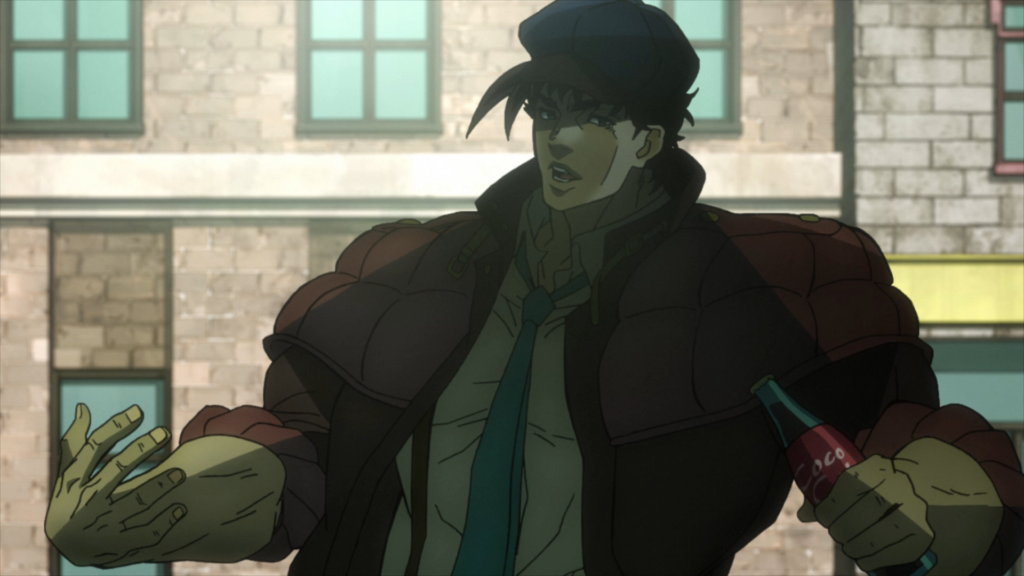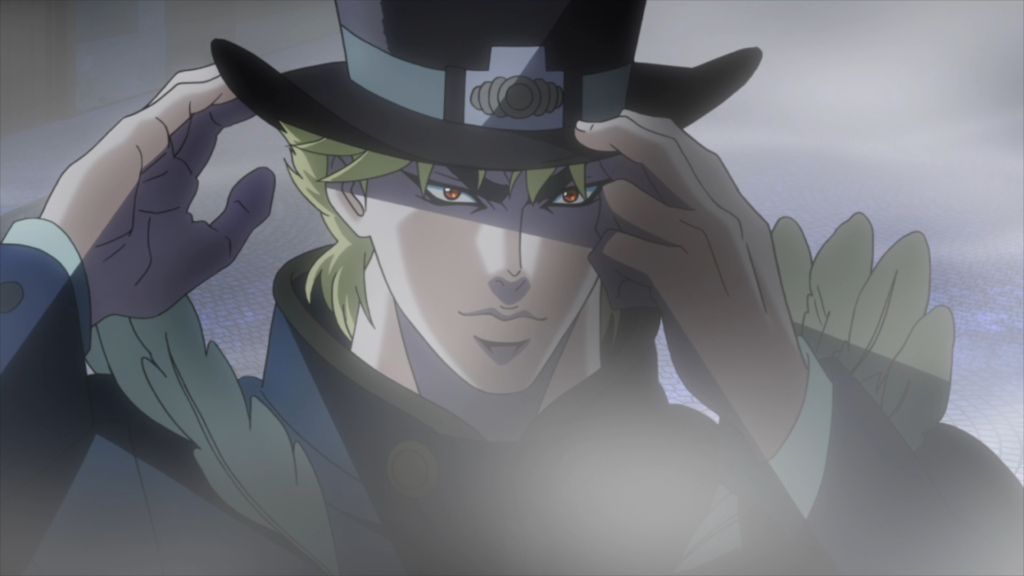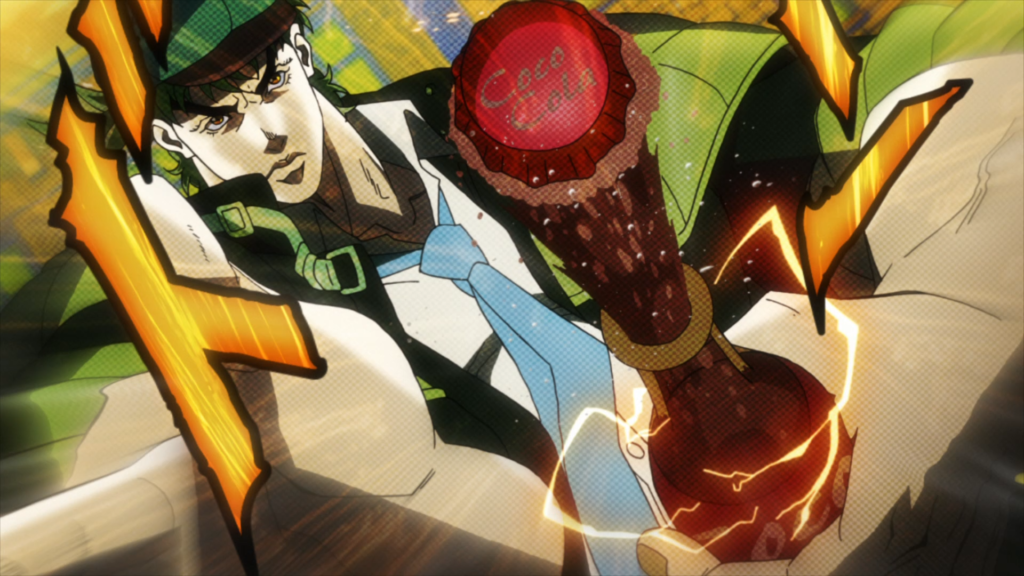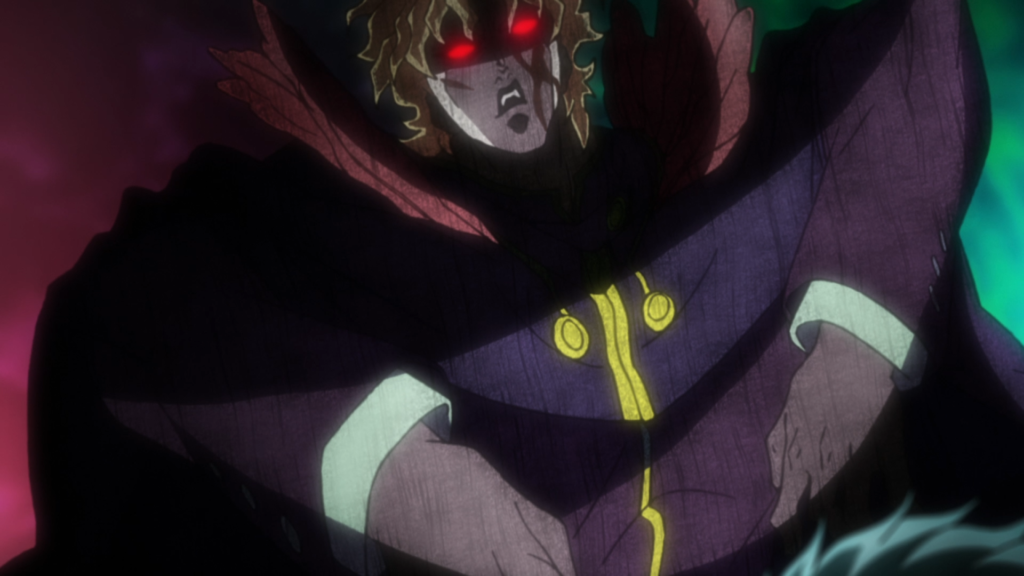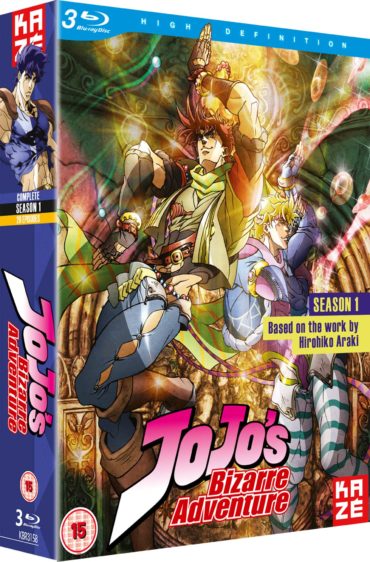JoJo’s Bizarre Adventure Season 1 Review
In 1886, Dario Brando stumbles upon the wreck of an English nobleman’s carriage, and inspects the remains in the hopes of robbing the dead of their valuables. Instead, Dario finds two survivors: George Joestar and his infant son, who awaken to find Dario trying to rob them, but mistakenly think he is attempting to save their lives. Many years later, after the death of Dario, George takes in his son Dio, hoping to repay the debt he owed to the boy’s father by raising him like his own son. However, little does he know that Dio, unsatisfied with his life, aims to usurp control of the Joestar fortune from his sole heir, Jonathan ‘JoJo’ Joestar. Wielding an ancient Aztec mask with supernatural properties, Dio sets out to destroy both George and his Jonathan, triggering a chain of events that will ripple throughout the years to come.
Despite being immensely popular in its home country of Japan, Hirohiko Araki’s long-running shounen manga JoJo’s Bizarre Adventure has seen an awful lot of difficulty on the road to becoming an anime. The first attempt was in 1993, when APPP released an adaptation of Part 3 of the manga, Stardust Crusaders, not only skipping the initial two parts of the manga, but cramming the entire 16 volumes of manga into just 13 episodes, with poor results. Fast forward a few years to 2007 when APPP tried their hand once again, this time going back to make a movie adaptation of Part 1, which was so awful that it was pulled from Japanese cinemas and has never seen the light of day since on home media, not even in Japan. It wasn’t until 2012 when fledgling studio David Productions finally did justice to the source material, producing a 24 episode adaptation that covered both Part 1, Phantom Blood, and Part 2, Battle Tendency, that might just be one of the finest shounen adaptations in recent memory.
The enduring popularity of JoJo is nothing to be sniffed at, running since the mid 80s all the way through to the present day, totalling over 100 volumes, and a large part of this is down to just how unique the series is when compared to the majority of its shounen peers. Perhaps one of the most immediately noticeable ways that the first two parts of JoJo stand out is in the setting, with Part 1 taking place in 1880s England and Part 2 being set in 1930s New York. As anyone who has watched a decent amount of shounen will tell you, the settings are usually contemporary Japan or some sort of fantasy world, so this change of pace is very much to be welcomed. An further unique selling point that the series has over its counterparts is the sheer amount of violence on display in places. A step-up from the likes of Bleach or Naruto, JoJo does not pull its punches in regards to gore, something which may turn off some viewers, but I personally loved, making the fights far more entertaining, and also allowing the animation team to get creative with the visuals.
Another aspect of JoJo which massively contributes to its longevity is its ability to constantly reinvent itself through ever-changing time periods and protagonists, something which is present in this anime adaptation, which tackles both Parts 1 and 2, offering two very distinct stories. Part 1 focuses on Jonathan’s battle against Dio, and Part 2 is about Joseph, Jonathan’s grandson, fighting against beings known as the Pillar Men. Part 1 is great, offering a short but sweet story that takes up the first nine episodes and sets up the world of JoJo nicely, but the series really hits its stride in Part 2, which is much longer, taking up the remaining 17 episodes. This extra length not only allows for a more complex and involved story over Part 1, but also means there’s additional time for excellent action set pieces, the highlight of which is no doubt the chariot race towards the climax, which is probably one of my favourite single episodes of anime. Something that both parts have in common is that they’re drenched in over-the-top melodrama, and are generally quite outlandish and, dare I say, bizarre. In spite of this, however, there are still plenty of moments of genuine emotion sprinkled throughout, which helps to keep things grounded despite the rather goofy tone, and overall creates a balanced experience.
If there is a single element I have to complain about in regards to JoJo in Parts 1 and 2, it would be hamon. Hamon is the supernatural power of choice of both Jonathan and Joseph, and allows them to channel energy through various objects, allowing them and other hamon users to turn various items such as wine, spaghetti, bubbles and clacker balls into weapons. Although it is a pretty cool idea, especially in Phantom Blood where the light-based energy is used against vampires, by the time you get to Battle Tendency, you realise how limiting it is, as it can be pretty repetitive to watch. However, even the manga’s author Hirohiko Araki realised this, introducing Stands in Part 3, which is a much more versatile replacement for hamon and is still being used all the way up to Part 8.
Although many fans look back at Jonathan Joestar as one of the weaker protagonists of JoJo, on watching this series for a third time, I realise that he isn’t as bad as some people make out. Yes, he is on the bland side in places, especially when directly compared to JoJos to come, yet he is one of the only ones who actually goes through major character development, in my opinion. At the beginning of Phantom Blood he is noble, but lacking in manners or any real strength, and is half the nobleman his father expects him to be. But over the 9 episodes, we seem him transform into a traditional hero, which pays off fantastically in the Part 1 finale, which I won’t spoil here. His inherent likeability juxtaposed against his cruel treatment by Dio generates a lot of sympathy for the character, which really hooks you in the first episode, as it makes the audience want to see him rise up against Dio. As for his successor Joseph, although lacking any real development, he wins you over by sheer force of character. Joseph is a total inverse of the sensitive gentleman Jonathan, being a loveable rogue with a heart of gold, and all in all, a much more fun and goofy character, who I, and most JoJo fans, absolutely adore.
The villain of Phantom Blood, Dio Brando, is amongst my favourite anime antagonists, being cartoonishly evil in the best way possible, and the absolute epitome of ‘love to hate’ characters. He isn’t entirely two-dimensional however, which is part of what makes him great, as you see part of his upbringing at the hands of his abusive father, and the poverty-stricken life he’s led up to the point he moves into the Joestar Manor, so you can understand his motivations for feeling he’s been dealt a bad hand in life, and his desire for power. Battle Tendancy’s villains aren’t quite as good, however, and are a little more on the generic side, although the Pillar Men still make for memorable enough foes for Joseph.
Anime studio David Production, although not really that well known prior to JoJo, did a real stand- out job here, bringing the manga pages to life with astounding accuracy and respect paid to the original art in the manga, all the way down to including visuals for the sound effects. The visuals themselves are also astoundingly unique, implementing vivid neon colours in a way that makes it stand out a mile, much like the contents of the show itself, and the visual flair really makes for an engaging watch.
JoJo’s Bizarre Adventure comes to the UK on Blu-ray for the first time courtesy of Kaze, bringing along an excellent English dub in the process. Much like the over-the-top nature of JoJo itself, the majority of the dub actors are hamming it up to the maximum, which in any other series would probably be a bad thing, but works magnificently well here. From the goofy accents to the overacting, everyone is clearly having a massive amount of fun, and the enthusiasm definitely shows through. The cast contains a whole bunch of well known voice actors, including Johnny Yong Bosch (Bleach, Akira, Sailor Moon), Patrick Seitz (One Piece, My Hero Academia, Deadman Wonderland), Benjamin Diskin (B: The Beginning, ERASED, Seven Deadly Sins) Wendee Lee (Cowboy Bebop, March Comes In Like a Lion, Outlaw Star) and Bryce Papenbrook (Sword Art Online, Attack on Titan, Blue Exorcist). If it isn’t your cup of tea, don’t worry; the Japanese voice track is also stellar, being over-the-top in a way that is uniquely Japanese, and is just as fitting and fantastic.
The soundtrack to JoJo is equally brilliant, coming courtesy of veteran composer Taku Iwasaki (Gurren Lagann, Soul Eater, Akame ga Kill!), combining a traditional orchestral soundtrack with some really awesome guitar-based tracks that really stand out. This is without even mentioning the astounding openings, ‘Sono Chi no Sadame’ by Hiroaki Tominaga and ‘Bloody Stream’ by Coda, which are pure brilliance both in terms of music and animation, as well as the now iconic ED ‘Roundabout’, a track by the prog-rock pioneers Yes, taken straight from their 1971 album Fragile.
In Summary
A nigh-perfect adaptation from the source material, JoJo’s Bizarre Adventure finally gets its chance to shine in anime form, with its utterly unique take on the shounen genre that is equal parts fun and action-packed, with a varied and gripping story and memorable cast.



